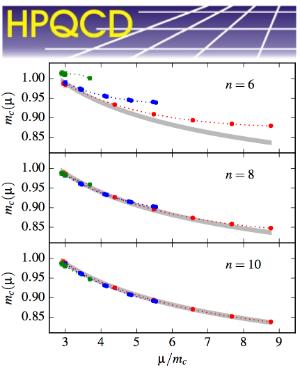Weighing up quarks
Published: 5 March 2015
Quark masses are difficult to determine because
 A new publication by researchers in the particle physics theory group has been highlighted as the “editor’s suggestion” in a top particle physics journal because it is “particularly important, interesting and well written”. The calculation gives a new, more accurate, determination of the masses of the quarks using the most realistic simulations of the subatomic world to date. This is an important ingredient in understanding how a deeper theory than our current Standard Model could give rise to these different masses for fundamental particles.
A new publication by researchers in the particle physics theory group has been highlighted as the “editor’s suggestion” in a top particle physics journal because it is “particularly important, interesting and well written”. The calculation gives a new, more accurate, determination of the masses of the quarks using the most realistic simulations of the subatomic world to date. This is an important ingredient in understanding how a deeper theory than our current Standard Model could give rise to these different masses for fundamental particles.
Quark masses are difficult to determine because quarks are never seen as free particles. The strong force interactions between them keep them bound into composite particles known as hadrons that are seen in particle detectors. This is in contrast to electrons which can be studied directly and their mass measured in experiment.
Quark masses instead must be inferred by matching experimental results for the masses of hadrons to those obtained from theoretical calculations using the theory of the strong force, Quantum Chromodynamics (QCD). Progress by the HPQCD collaboration using a numerically intensive technique known as lattice QCD means that this can now be done to 1% precision. The publication determines the charm quark mass to high accuracy (shown in the figure) and then uses a ratio of the charm quark mass to other quark masses to determine them.
The research was done with collaborators in Cambridge and at Cornell University in the USA as part of the High Precision QCD (HPQCD) Collaboration and is published in the latest issue of Physical Review D. The calculations were carried out on the Darwin supercomputer at the University of Cambridge, part of STFC’s High Performance Computing Facility known as DiRAC.
A key part of the funding for this work came from a bequest to the particle physics groups in the School of Physics and Astronomy from the estate of Dr David McNaught Gilmour.
First published: 5 March 2015
<< 2015 Archive

